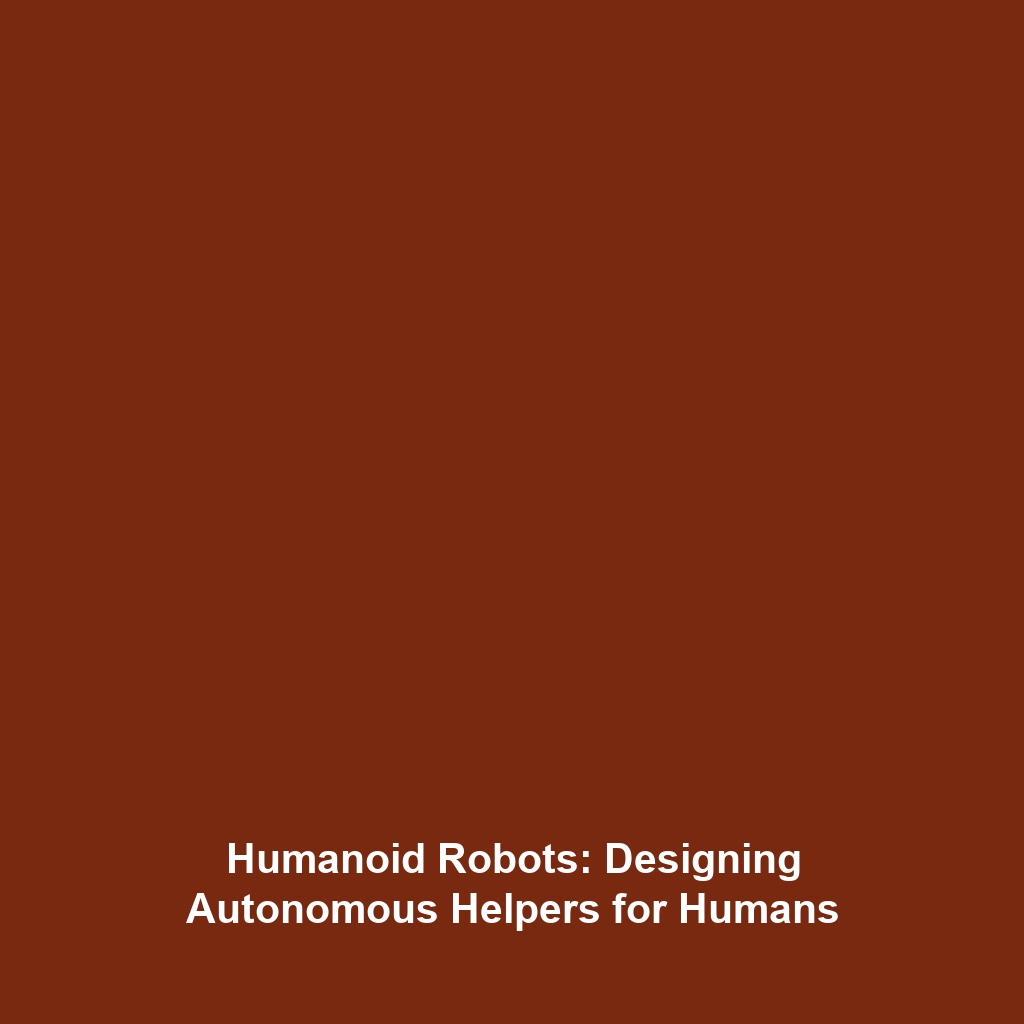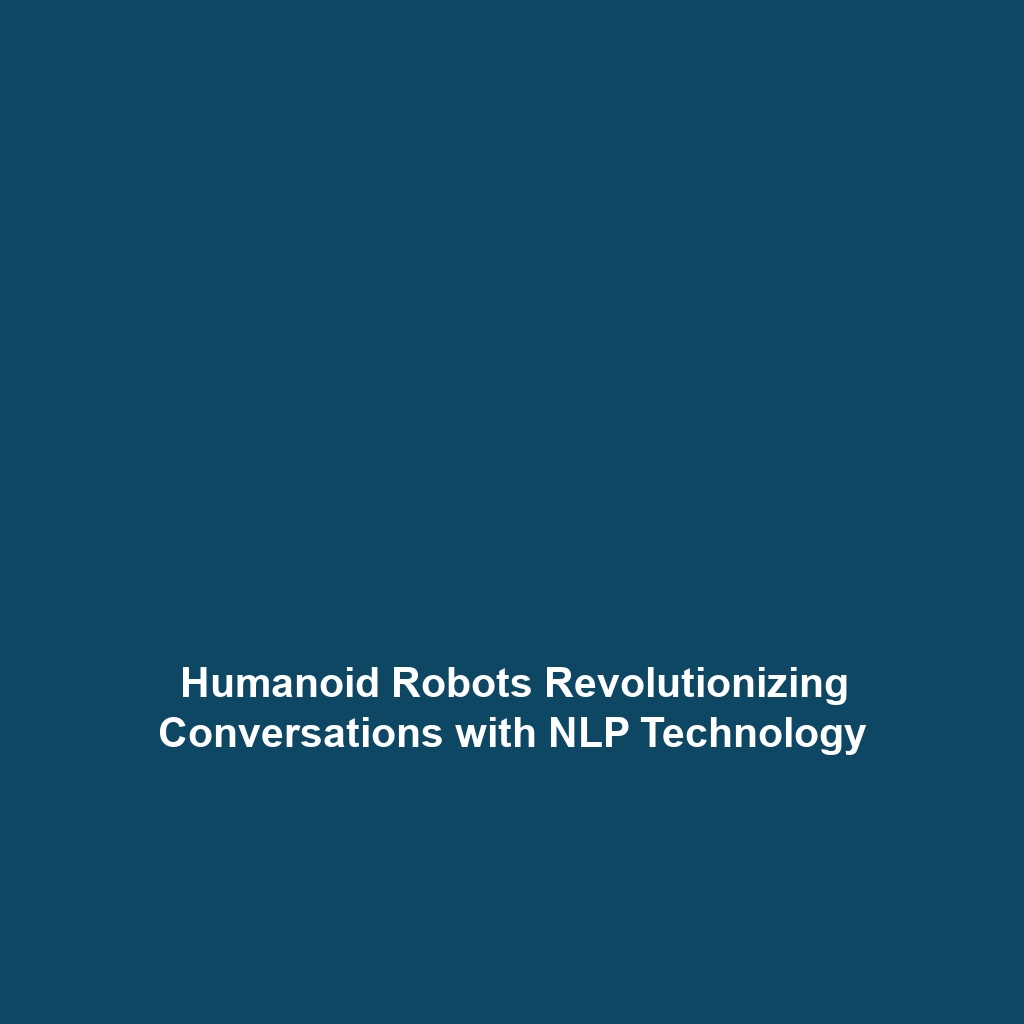Natural Language Processing: How Humanoid Robots Communicate
Introduction
Natural Language Processing (NLP) plays a crucial role in enabling humanoid robots to interact effectively with humans. This technology allows robots to understand, interpret, and respond to human language, bridging the communication gap between machines and people. The significance of NLP within the broader context of humanoid robots cannot be overstated, as it enhances user experience and facilitates seamless interactions in various applications—from healthcare to customer service.
Key Concepts
Understanding the major concepts of Natural Language Processing is essential for grasping its application in humanoid robots. Some key principles include:
1. Language Understanding
Humanoid robots utilize NLP algorithms to parse and comprehend spoken or written language. This involves syntactic analysis, semantic interpretation, and contextual awareness to ensure accurate comprehension.
2. Text-to-Speech and Speech Recognition
These two components allow robots to convert text into spoken words and vice versa, facilitating bi-directional communication. Advances in machine learning have significantly improved the fluency and naturalness of robotic speech.
3. Sentiment Analysis
Through sentiment analysis, robots can gauge the emotional tone of a conversation. This capability enables them to respond appropriately in different scenarios, enhancing user engagement.
Applications and Real-World Uses
The applications of Natural Language Processing in humanoid robots are vast and varied. Some notable examples include:
- Customer Service Robots: NLP enables robots to handle customer inquiries in retail environments, making interactions more efficient.
- Healthcare Assistants: Humanoid robots can assist patients by understanding and responding to their needs, thereby improving patient care.
- Education: Educational robots use NLP to support language learning by engaging students in interactive dialogues.
Current Challenges
Despite significant advancements, there are challenges that researchers face in NLP as it relates to humanoid robots:
- Ambiguity in Language: Human language is often ambiguous, making it challenging for robots to interpret meaning accurately.
- Cultural Nuances: Variations in language, slang, and cultural expressions can hinder effective communication.
- Computational Power: High processing requirements for real-time language understanding can limit the deployment of sophisticated NLP systems in humanoid robots.
Future Research and Innovations
The future of Natural Language Processing in humanoid robots is promising, with ongoing research focused on:
- Enhanced Machine Learning Algorithms: Future innovations may include more advanced machine learning techniques that improve language understanding and contextual awareness.
- Emotion Recognition: Research is underway to develop robots that can better recognize and respond to human emotions, creating more intuitive interactions.
- Multimodal Communication: Innovations may also explore integrating non-verbal cues like gestures and facial expressions with verbal communication.
Conclusion
Natural Language Processing significantly enhances communication capabilities in humanoid robots, making them more approachable and functional in various sectors. As technology evolves, tackling current challenges will be vital for the next generation of humanoid robots. To stay updated on this exciting field, consider exploring more about applications of NLP in humanoid robots or future innovations related to humanoid robots.









